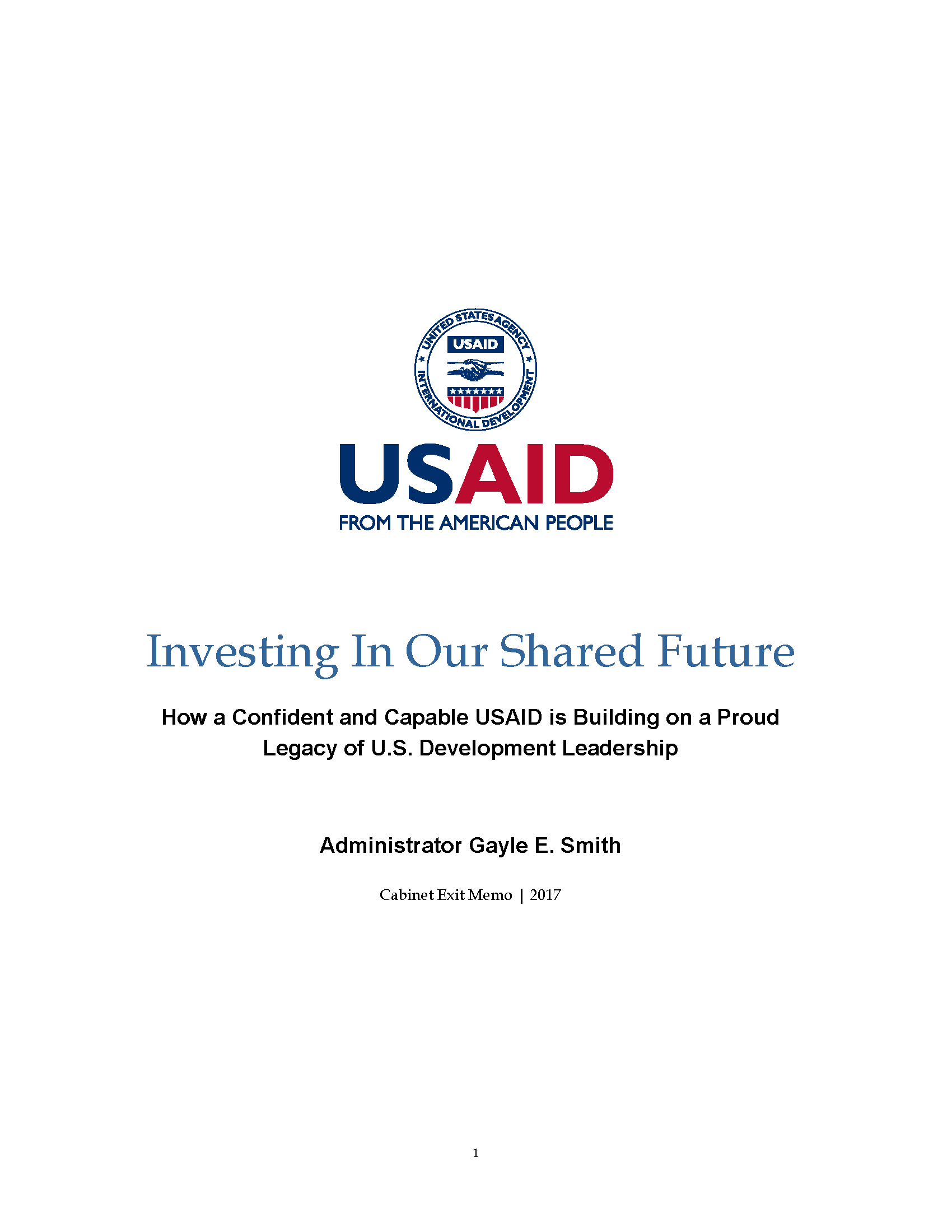- What We Do
- Agriculture and Food Security
- Democracy, Human Rights and Governance
- Economic Growth and Trade
- Education
- Ending Extreme Poverty
- Environment and Global Climate Change
- Gender Equality and Women's Empowerment
- Global Health
- Water and Sanitation
- Working in Crises and Conflict
- U.S. Global Development Lab
Investing in Our Shared Future
Cabinet Exit Memo | 2017
Investing in Our Shared Future
Cabinet Exit Memo | 2017
The Global Development Challenge
Previous: Introduction | Next: USAID’s Role and Impact
Since 1990, extreme poverty has been cut by more than half. Thirty-three countries considered low income in 2000 have now achieved middle-income status. Development gains, particularly in global health, have in many cases been breathtaking: since 1990, the world has cut the rate and number of child deaths by more than half, and today, 630 fewer women will die during childbirth each day than in 1990. But development gains have also been uneven, between and within countries; fragile states continue to descend into violence or economic catastrophe; progress in post-crisis transitions is slow in coming; and extreme poverty, though reduced from 1.8 billion in 1990, still defines the lives of some 700 million people.
In 2015, 193 countries signed on to the Sustainable Development Goals, which chart a path to expand progress but also importantly reflect the growing recognition that aid alone is grossly insufficient to meet the world’s development challenges, and that sound policies and other streams of capital – including private sector investment and domestic resources – are at least as, if not more, critical. An international consensus captured in the July 2015 Addis Ababa Action Agenda of the Third International Conference on Financing for Development reflects the new and important fact that traditional aid today represents only 9 percent of financial flows to developing countries, with private flows and domestic resources now making up the vast majority of total development finance for many countries. International humanitarian response, however, remains financed almost entirely by traditional donors, with the international community providing on average $18.3 billion per year over the last five years.
Support for USAID’s development and humanitarian missions has increased dramatically. Built on longstanding support from NGOs and the faith community, who together channel billions of dollars per year in donations from American citizens, development contributors now also include the private sector -- which recognizes that sustainable development is good for business -- and national security experts and practitioners who understand that investing in sustainable and inclusive development is critical in promoting peace and stability and in most cases a more cost-effective alternative to military interventions.
Previous: Introduction | Next: USAID’s Role and Impact
go.wh.gov/CabinetinReview








Comment
Make a general inquiry or suggest an improvement.